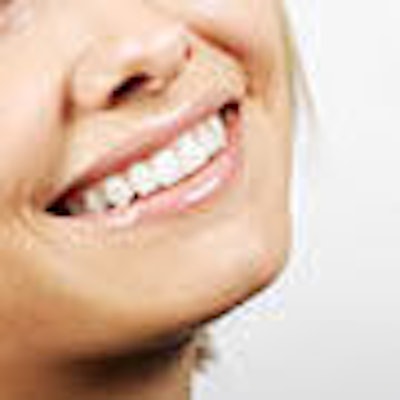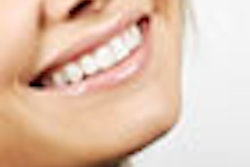
Many patients are obsessed with obtaining the perfect Hollywood smile. But these days, instead of heading to their dentist's office, some are heading to the mall.
Teeth-whitening kiosks and centers run by nondentists are popping up in malls across the U.S. and are attracting attention because they offer a less expensive alternative to having the work done by a dentist. Procedures that might cost $400 to $500 at a dentist's office will run patients only about $100 to $140 at these centers.
But are they safe?
ADA consumer advisor Matthew Messina, D.D.S., who practices in Cleveland, has several concerns. First, the centers are not run by dentists. In fact, the personnel are not required to have any kind of dental training.
"Even though it looks like a dentist's office, it's not," he said. "When a patient sees a dental chair and people wearing scrubs, they assume the kiosk is using approved materials, has infection control standards, and is equipped with all the facilities of a dental office."
The reality is there is no way of knowing exactly what materials these centers are using for the procedure, Dr. Messina added. A flawed procedure could lead to allergic reactions, gum irritation, gum recession, and other problems.
In addition, teeth whitening should only be done on a healthy mouth, and staff at the mall-based centers cannot do a physical examination to determine that. They are also unequipped to deal with dental emergencies.
"Patients expect them to be prepared in case there is a problem," Dr. Messina said. "When they can't handle an emergency, they make the dental profession look bad."
Fortunately, safety margins in whitening procedures are so large that these problems rarely occur.
"But on the flip side, these procedures are then not particularly effective," he said.
Apart from patients' safety, another area of concern is the legality of the mall-based whitening centers. The North Carolina and Ohio state dental boards have taken the strongest measures of any states to regulate these centers, said Barb Palmucci, an investigative assistant with the Ohio State Dental Board.
Every state has its own definition for what constitutes the practice of dentistry. In North Carolina, for example, only a licensed practitioner can remove stains, accretions, or deposits from human teeth. As a result, the North Carolina State Board of Dental Examiners currently has lawsuits pending against two teeth-whitening centers, Signature Spas and Carmel Spa, that it has accused of performing dentistry without a license.
Many of these facilities provide patients with gel trays that the patients handle themselves, then they "loan" them the lights. This approach allows the centers to claim that they did not touch the patient, thereby avoiding prosecution by staying on the right side of the state's dental practice acts, Palmucci explained.
Also, since bleaching products fall into FDA's cosmetic category, there is no restriction on who can hand them out. Palmucci said she has heard that some of these centers use as much 44% carbamide peroxide in their delivery systems. Crest whitening strips have 10%, while dentists typically use 10% to 22%.
Palmucci also echoed Dr. Messina's concern that the staff at these centers are not adequately equipped to judge if the mouth they are whitening is healthy. Even though patients are asked to fill out forms that inquire about their dental health at some of the facilities, the risk remains.
"People don't know if they have conditions like decay or periodontitis that are mentioned in these forms," Palmucci, said.
Bottom line: "If [whitening centers] are putting chemical agents in a person's mouth without a dental exam, that's a risk," said Bobby D. White, chief operations officer of the North Carolina State Board of Dental Examiners.
Angela Sieving, president of BleachBright of Illinois and owner of a teeth-whitening center at Eastland Mall in Bloomington, IL, has nothing but satisfied customers to report. Sieving's center uses BleachBrite's prepackaged gel trays for procedures.
"Everything is customer-applied," Sieving said. "The mouth piece with the gel (which contains 6% hydrogen peroxide) is prepackaged. You hand it to the patient, put a light on them, and it takes 20 minutes."
Sieving said 95% of her customers are happy with the treatment, and since they use such a low level of hydrogen peroxide, it doesn't cause problems. The company guarantees a three- to five-shade difference in teeth color.
"There is not a patient who comes in here that we don't see results with," Sieving said.
Dental professionals in North Carolina and elsewhere are very concerned about this trend, according to Palmucci. But "people just think about white teeth and a shiny smile," she said.



















